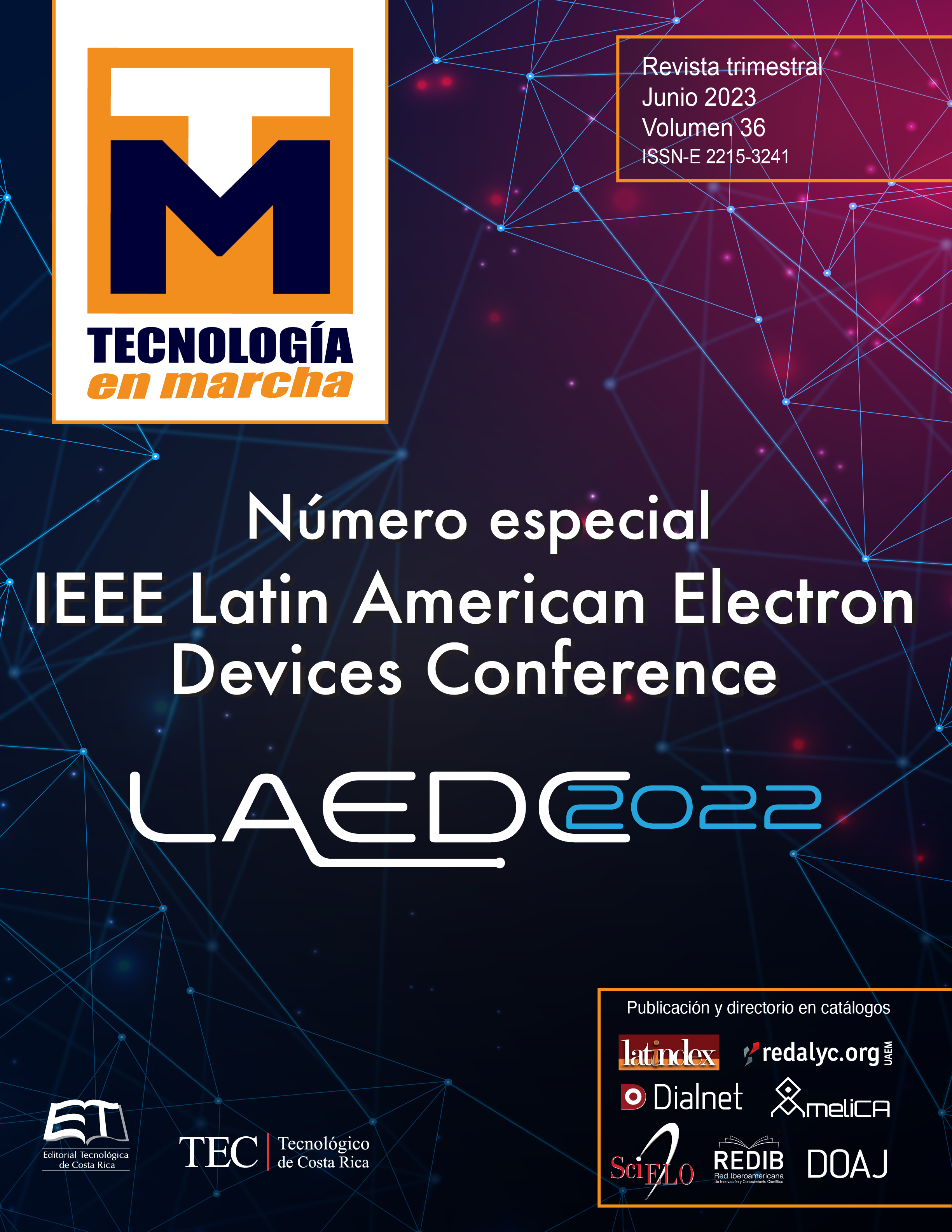Emerging 2D materials for tunneling field effect transistors
Main Article Content
Abstract
This work focuses on understanding the electronic properties of materials to enhance the performance of Tunnel Field Effect Transistor (TFET) through Density Functional Theory (DFT) simulations. Material selection prefers a p-type material with in-plane high density of state (DOS) (and low out-of-plane effective mass, m*, where defined for many layer systems), and high valence band maxima (VBM) energy stacked with an n-type material with low conduction band minimum (CBM) energy (large electron affinity (EA)) that creates a broken or nearly broken band alignment and has low lattice mismatch. SnSe2 is well-suited for an n-type 2D material due to high EA, while WSe2, Black phosphorous (BP) and SnSe are explored for p-type materials. Bilayers consisting of monolayers of WSe2 and SnSe2 show a staggered but nearly broken band alignment (gap of 24 meV) and a high valence band DOS for WSe2. BP-SnSe2 shows a broken band alignment and benefits from a low lattice mismatch. SnSe-SnSe2 shows the highest chemical stability, an optimal performance in terms of DOS of SnSe, tunability with an external field, and high VBM that also leads to a broken band alignment.
Article Details

This work is licensed under a Creative Commons Attribution-NonCommercial-NoDerivatives 4.0 International License.
Los autores conservan los derechos de autor y ceden a la revista el derecho de la primera publicación y pueda editarlo, reproducirlo, distribuirlo, exhibirlo y comunicarlo en el país y en el extranjero mediante medios impresos y electrónicos. Asimismo, asumen el compromiso sobre cualquier litigio o reclamación relacionada con derechos de propiedad intelectual, exonerando de responsabilidad a la Editorial Tecnológica de Costa Rica. Además, se establece que los autores pueden realizar otros acuerdos contractuales independientes y adicionales para la distribución no exclusiva de la versión del artículo publicado en esta revista (p. ej., incluirlo en un repositorio institucional o publicarlo en un libro) siempre que indiquen claramente que el trabajo se publicó por primera vez en esta revista.
References
C. Gong, et al., “Band alignment of two-dimensional transition metal dichalcogenides: Application in tunnel field effect transistors”, Applied Physics Letters 103, 53513 (2013).
Zhang, Chenxi, et al. “Systematic study of electronic structure and band alignment of monolayer transition metal dichalcogenides in Van der Waals heterostructures.” 2D Materials 4. 1 (2016): 015026.
Chen, F.W., Ilatikhameneh, H., Klimeck, G., Chen, Z. and Rahman, R., 2016. Configurable electrostatically doped high performance bilayer graphene tunnel FET. IEEE Journal of the Electron Devices Society, 4(3), pp.124-128.
Cao, Wei, et al. “Designing band-to-band tunneling field-effect transistors with 2D semiconductors for nextgeneration low-power VLSI.” 2015 IEEE International Electron Devices Meeting, 2015.
Cao, J., Logoteta, D., Pala, M.G. and Cresti, A., 2018. Impact of momentum mismatch on 2D van der Waals tunnel field-effect transistors. Journal of Physics D: Applied Physics, 51(5), p.055102.
Oliva, Nicolò, et al. “WSe 2/SnSe 2 vdW heterojunction Tunnel FET with subthermionic characteristic and MOSFET co-integrated on same WSe2 flake.” npj 2D Materials and Applications 4.1 (2020): 1-8.
Ameen, Tarek A., et al. “Few-layer phosphorene: An ideal 2D material for tunnel transistors.” Scientific reports 6.1 (2016): 1-7.
Li, Hong, Peipei Xu, and Jing Lu. “Sub-10 nm tunneling field-effect transistors based on monolayer group IV mono-chalcogenides.” Nanoscale 11.48 (2019): 23392-23401.
Kresse, Georg, and Jürgen Furthmüller. “Efficient iterative schemes for ab initio total-energy calculations using a plane-wave basis set.” Physical review B 54.16 (1996): 11169.
Shafique, A., Samad, A. and Shin, Y.H., 2017. Ultra-low lattice thermal conductivity and high carrier mobility of monolayer SnS2 and SnSe2: a first principles study. Physical Chemistry Chemical Physics, 19(31), pp.2067720683.
Perdew, John P., Kieron Burke, and Yue Wang. “Generalized gradient approximation for the exchangecorrelation hole of a many-electron system.” Physical review B 54.23 (1996): 16533.
Klimeš, Jiří, David R. Bowler, and Angelos Michaelides. “Van der Waals density functionals applied to solids.” Physical Review B 83.19 (2011): 195131.
Agarwal, S., Teherani, J.T., Hoyt, J.L., Antoniadis, D.A. and Yablonovitch, E., 2014. Engineering the electron– hole bilayer tunneling field-effect transistor. IEEE Transactions on Electron Devices, 61(5), pp.1599-1606

